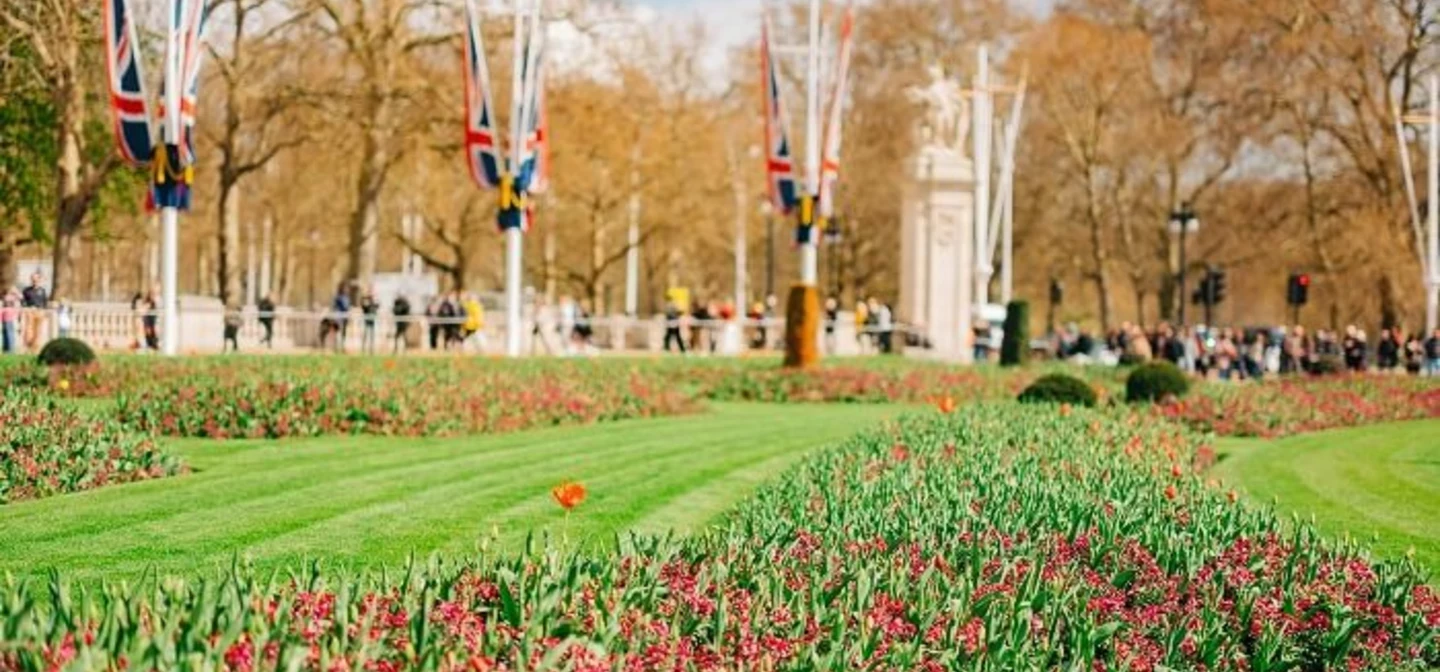
Buckingham Palace flower beds
The Buckingham Palace flower beds, or Memorial Gardens, were created in 1901 for a memorial to Queen Victoria. Find out more about the stunning arrangement.
History
The Buckingham Palace flower beds, also known as the Memorial Gardens, were created in 1901 as part of Sir Aston Webb's overall design for a memorial to Queen Victoria after her death that year.
Design
The formal flowerbeds are laid out in a semi-circular design around the central memorial and are a familiar sight during the many of the famous processions and ceremonies that take place in this area.
Planting schedule
The planting schedule follows a traditional seasonal pattern that is repeated each year. Each planting takes approximately 2 weeks and involves up to ten staff.
Replanting of the beds in summer requires approximately 22,500 plants, including geraniums, spider plants, salvias and weeping figs. Scarlet geraniums are used to match the tunics of The King's Guard at Buckingham Palace. The tall geraniums in the centre of the bed are called standard geraniums and take 9 months to grow 1.2m in height. These plants are sown in September of the previous year in the glasshouses at Hyde Park.
In winter time the beds are filled with about 50,000 yellow wallflowers and red tulips.